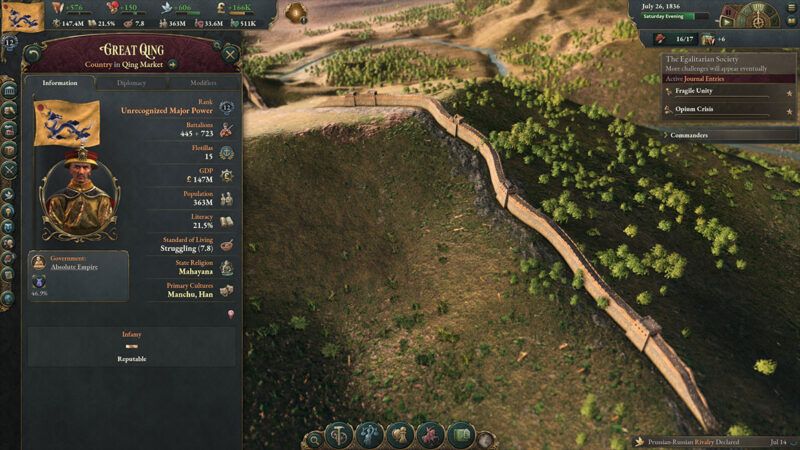Review: Victoria 3 Lacks Spontaneous Order
The video game is a 100-year simulation of the Victorian era where the player has centralized control over the government of their chosen country.

Newcomers to the Victoria video game franchise should quickly notice its depth and complexity. Spreadsheetlike formulas seem to determine everything from the price of paper in hundreds of states to foreign relations between every country. The depth doesn't necessarily mean more control for the players, though, as they might find themselves constrained by political parties, government budgets, or technology.
Victoria 3, the latest iteration of the game, has glitches, a steep learning curve, and so much happening that even a computer can get overwhelmed. Still, Paradox Development Studio deserves praise for the incredible level of detail in their 100-year simulation of the broader Victorian era. The gameplay teaches players how economically interconnected the world was long before the internet and cellphones gave us instant access to the far reaches of the planet.
The player is, with some aforementioned constraints, in charge of the government of their chosen country. The elaborate level of centralized control might be fun for a strategy game, but it is unrealistic compared to real life. Even if they institute a laissez faire economic system, players are still responsible for trade routes and when to expand a wide variety of industrial buildings in each of their states, from motor factories to rubber plantations. Technological advances in production techniques and social values spring not from spontaneous order but from the player's choice of when to pursue them.
One unavoidable quandary kneecaps the gameplay. The most common yardstick of success, a country's prestige, is elevated by a bigger economy, bigger armies and navies, and higher government wages. But as a country expands, controlling the minutiae of numerous states, colonies, and industries becomes unwieldy. Big government is a lot less fun.


Show Comments (10)